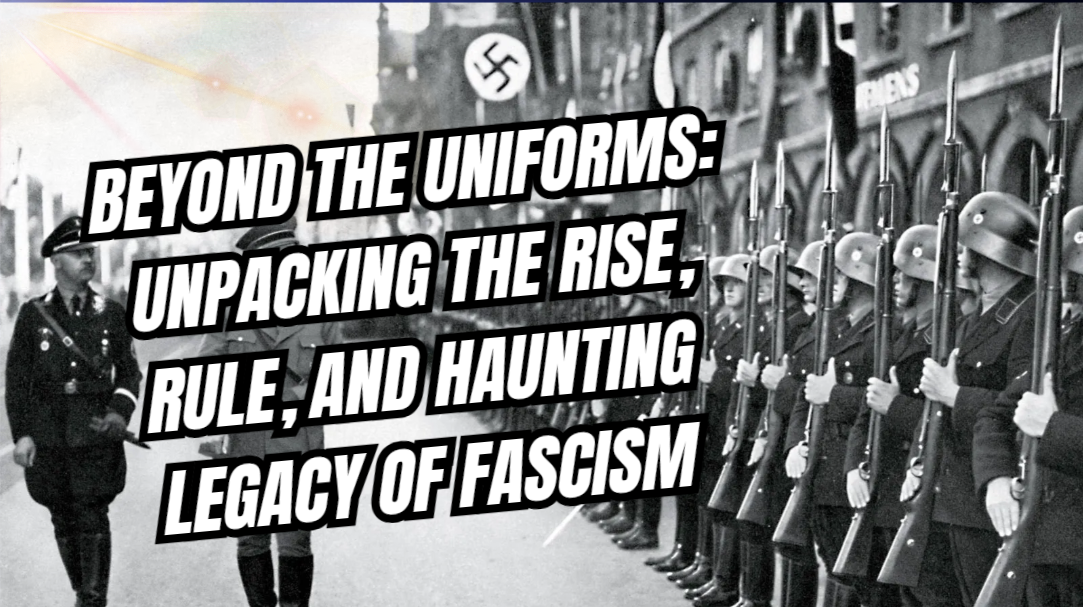The term “fascisterne” – evoking stark images of marching boots, rigid salutes, and totalitarian control – is more than just a historical label for adherents of fascism. It represents a dark, complex chapter in human history whose roots, ideology, and devastating consequences continue to resonate. Understanding the fascisterne isn’t merely an academic exercise; it’s a crucial exploration of how societies fracture, how dangerous ideologies take hold, and why vigilance remains essential. Let’s delve into their world.
The Fertile Ground of Despair: Where Fascism Took Root
The early 20th century was a crucible of chaos. The unprecedented carnage of World War I shattered empires, economies, and millions of lives. Nations like Italy and Germany were left reeling:
-
Deep Disillusionment: Traditional institutions and monarchies seemed bankrupt. People felt betrayed and adrift, desperate for stability and a renewed sense of purpose.
-
Economic Collapse: Hyperinflation, mass unemployment, and widespread poverty created fertile ground for radical solutions. Mainstream political parties appeared feeble and ineffective.
-
Social Unrest: Strikes, political violence, and a sense of societal fragmentation fueled fears of communist revolution and a longing for order.
Into this volatile vacuum stepped the fascisterne. They offered potent, seductive promises: national rebirth, iron-clad stability, restored pride, and a decisive end to chaos. Their message, blending radical change with nostalgic appeals to past glory, resonated powerfully with the fearful and disillusioned.
The Core Tenets: The Ideological Engine of Fascism
The fascisterne weren’t merely opportunists; they built a distinct, brutal ideology:
-
Ultra-Nationalism as Religion: The nation-state was elevated to a sacred entity. Unity was paramount, defined rigidly by ethnicity, culture, or race. Diversity was seen as a corrosive weakness; dissent was treason. “Us vs. Them” became a foundational mantra.
-
The Cult of the Supreme Leader: Fascism rejected democracy outright. It demanded absolute, centralized authority vested in a single, charismatic leader (Il Duce, Der Führer). Parliaments, courts, and free press were dismantled or subjugated. Obedience, not debate, was the supreme virtue.
-
The Rejection of “Weak” Systems: Liberalism (with its individual rights and pluralism) and Socialism/Marxism (with its class struggle and internationalism) were portrayed as existential threats. Fascism positioned itself as the sole alternative, promising strength through hierarchy, discipline, and national unity above all else.
-
Militarism and Propaganda: Power was projected through spectacle and force. Mass rallies, paramilitary organizations, and the glorification of war permeated society. A relentless propaganda machine, controlling media, education, and art, saturated public life, manufacturing consent and demonizing enemies.
The Devastating Impact: When Fascism Ruled
The ascent of the fascisterne brought immediate and catastrophic consequences:
-
The Erosion of Liberty: Civil rights vanished overnight. Political opposition was banned, critics imprisoned, tortured, or killed. Secret police and pervasive surveillance created societies paralyzed by fear.
-
Systematic Persecution: The toxic nationalism of fascism demanded scapegoats. Minorities – Jews, Roma, LGBTQ+ individuals, political dissidents, the disabled – were systematically targeted, stripped of rights, and subjected to violence. The Holocaust stands as the horrific apex of this genocidal impulse.
-
The March to War: Convinced of their inherent superiority and driven by expansionist ideologies (like Lebensraum), fascist regimes pursued aggressive militarism. Their invasions ignited World War II, the deadliest conflict in human history, leaving continents in ruins and tens of millions dead.
The Fall and the Unfinished Shadow: Legacy of the Fascisterne
By 1945, the core fascist regimes lay in ruins, defeated militarily. The Nuremberg Trials sought justice, exposing the depths of their crimes. Yet, the shadow of fascism didn’t simply vanish:
-
Enduring Scars: Societies bore deep psychological, social, and physical scars. Rebuilding shattered democracies and confronting collective guilt became immense challenges.
-
Modern Echoes: While overt fascist states collapsed, the tactics and rhetoric persist. During times of crisis – economic hardship, mass migration, social upheaval – fringe groups often resurrect elements of the fascist playbook: scapegoating minorities, attacking democratic institutions and the free press, promoting authoritarian “strongmen,” and exploiting disinformation. The digital age accelerates the spread of these extremist ideologies.
Why the Fascisterne Matter Now More Than Ever
Studying this history isn’t just about the past; it’s a vital toolkit for the present and future:
-
Guardrails Against History: Understanding how fascism rose – exploiting fear, economic distress, and democratic fatigue – allows us to recognize early warning signs in our own societies. Complacency is dangerous.
-
Vigilance for Democracy: Attacks on independent judiciaries, attempts to undermine free elections, the vilification of marginalized groups, and the normalization of political violence – these are not abstract concepts. They are echoes demanding our attention and resistance.
-
The Imperative of Memory: Remembering the horrors perpetrated by the fascisterne is an ethical duty. It honors the victims and reinforces the immense value of the democratic principles, human rights, and pluralism they sought to destroy – principles that remain fragile and require constant defense.
Conclusion: Lessons Etched in History
The story of the fascisterne is a chilling testament to the speed at which democratic freedoms can erode when societies succumb to fear, anger, and the allure of simplistic, authoritarian solutions. Their legacy is one of unparalleled destruction and suffering. While the jackboots of the 1930s are gone, the underlying currents that empowered them – intolerance, hyper-nationalism, the thirst for absolute control – still flow beneath the surface of modern politics. By rigorously examining the origins, ideology, and catastrophic consequences of fascism, we arm ourselves with the knowledge necessary to identify its modern iterations and steadfastly defend the open, inclusive, and free societies we cherish. The lessons of the fascisterne are not relics; they are urgent, enduring imperatives.

